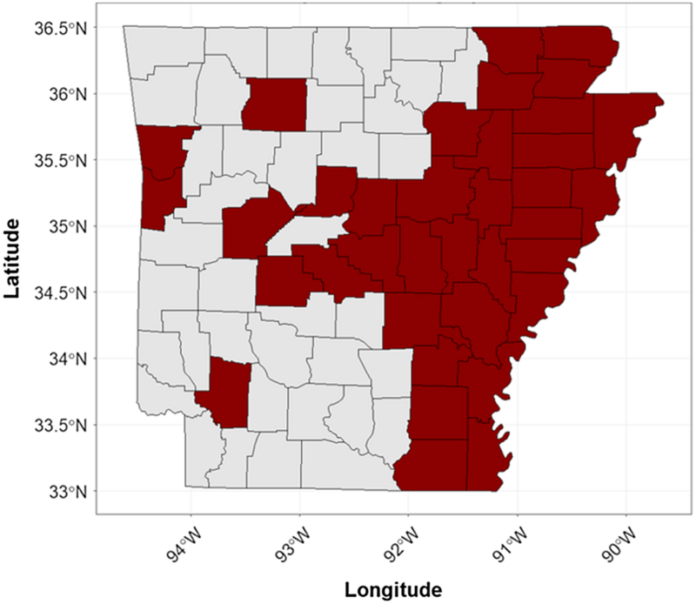Herbicides are the most extensively used pesticide applied to agronomic crops in the United States. Since 2013, more than 93% of the planted hectares for corn (Zea mays L.), cotton (Gossypium hirsutum L.), peanut (Arachis hypogaea L.), rice (Oryza sativa L.), and soybean [Glycine max (L.) Merr.] have received a herbicide application (USDA-NASS 2020). In contrast, the next most frequently used pesticides were fungicides in peanut (88% of planted hectares) followed by other chemicals (65%) and insecticides (56%) in cotton. All other pesticide applications were reported on less than 50% of the planted hectares for the respective crop (USDA-NASS 2020).
Although herbicide applications are common occurrences, the specific application techniques and delivery methods are often overlooked fundamental steps required for optimizing herbicide performance (Kudsk 2017). The herbicide application process is complex with numerous opportunities for failure even before spray deposits reach the intended target (Ebert et al. 1999). Improper herbicide application practices, such as incorrect nozzle selection, boom or flight height, equipment setup, spray volume, and sprayer speed, can lead to increased drift potential (Alves et al. 2017; Bueno et al. 2017; Hewitt et al. 2002; Nordby and Skuterud 1974), reduced spray pattern uniformity (Azimi et al. 1985; Forney et al. 2017), reduced coverage (Ferguson et al. 2016; Legleiter and Johnson 2016), and reduced weed control (Butts et al. 2018; Knoche 1994; Meyer et al. 2016). Herbicide drift to roadsides and field borders caused by application miscues has led to the evolution of herbicide resistance within two generations of Amaranthus spp. (Vieira et al. 2020). As a result, focus should be placed on using precise application procedures to maximize efficacy of herbicide applications while maintaining environmental safety (Matthews et al. 2014).
Read more on this study at Cambridge.org





